No products in the cart.
February 27
酸味 (さんみ) : Sanmi / Sour
0 comments
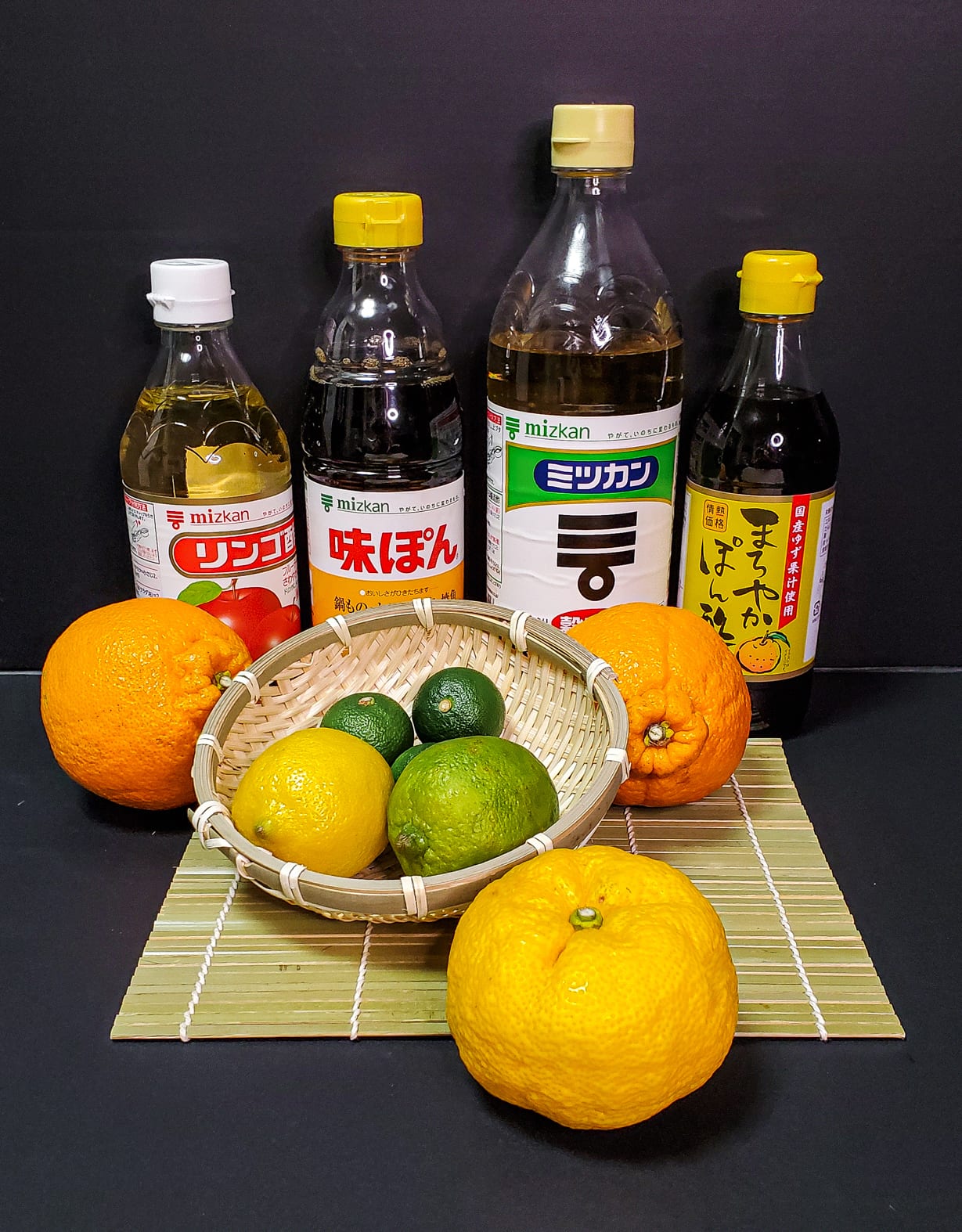
Each article augments Japanese words throughout its text. The vocabulary throughout the text is related to cooking, food, and flavor. Below each block of text will be a drop down menu that contains the meaning and reading of each word, Like this:
和食(わしょく) is a cuisine loved by people all over the world. Yet, most people don't know how to cook 和食 because they don't understand the 食材料(しょくざいりょう)in Japanese recipes.
和食(わしょく)
"Wa-shoku" – Japanese cuisine
和:わ:Japanese style; harmony
食:しょく:eat; food
食材料(しょくざいりょう)
"shokuzai-ryō"– ingredients
食:しょく:food; eat
材:ざい:lumber
料:りょう:materials
This dropdown menu can be used in your preferred study method. We recommend that you attempt to read through each section first without revealing the word meanings, and make educated guesses based on context clues. Then, reveal the word meanings and read the section once more using the drop list for reference.
This is of course completely up to you, as you might prefer to read each drop list first, before reading each section. There are no right or wrong ways to use this tool, although we DO suggest that you use some form of memorization. So try to keep the words hidden for as long as possible, or go off of memory or context for as long as you can, and don't be afraid to read a section more than once!
酸味(さんみ) is the unsung hero of all the flavor profiles. It can't instantly magnify all other flavors in a dish the way 塩味(えんみ)can. It doesn't flood our receptors with dopamine and encourage us to keep filling our faces the way that 甘味(かんみ) does. it doesn't put us in a trance-like state of hypnotic satisfaction the way 旨味(うまみ)will. Hell, if anything, it has the opposite effect when eaten in isolation of other 味(あじ), by assaulting our senses with a sudden pungent kick to the teeth. Try taking a swig of generic vinegar, or munching on some lemon wedges for a snack if you want to see for yourself.
From an evolutionary perspective, this makes total sense. The going theory is that we developed a sensitivity to 酸味 primarily to detect foods that were 腐っている(くさっている), and secondarily to identify foods which were high in electrolyte-balancing 栄養(えいよう). (The kanji for "electrolyte" is 電解質(でんかいしつ)for all you over-achievers out there). But in 料理(りょうり)and 味付け(あじつけ), 酸味 does so much more, which is why cuisines high in it tend to be more vibrant (think Mexican food), while cuisines low in it are often bland and mealy (sorry Russia...)
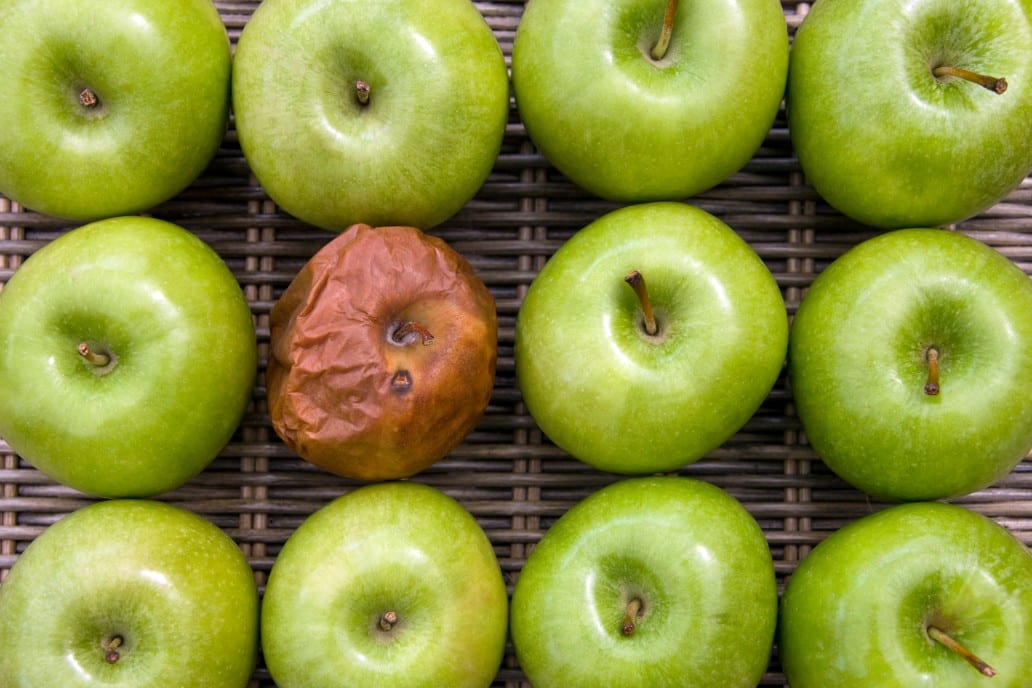
酸味(さんみ)
"sanmi" – sour
酸:さん:acid
味:み:flavor; taste
塩味(えんみ)
"enmi" – salty
塩:えん:salt
味:み:flavor; taste
甘味(かんみ)
"kanmi" – sweet
甘:かん:sweet
味:み:flavor; taste
旨味(うまみ)
"umami" – savory
旨:うま:savory; skilled; great
味:み:flavor; taste
味(あじ)
"aji" – flavor; taste
腐ってる(くさってる)
"kusatteru" – rotting; rotten
腐る:くさる:to rot; to go bad; to decay; to spoil
栄養(えいよう)
電解質(でんかいしつ)
"denkaishitsu" – electrolytes
電:でん:electricity
解:かい:unravel; untie; solve
質:しつ:substance; quality; matter
料理(りょうり)
"ryōri" – cooking
料:りょう:materials; fee
理:り:logic; reason; arrangement
味付け(あじつけ)
"aji-tsuke" – flavor development
味:あじ:flavor; taste
付け:つけ:to add; to join; to fix
Writer and chef Samin Nosrat's Salt, Fat, Acid, Heat is a mouthwatering and terribly informative book turned four part Netflix series that explores the titular four most important elements of 味付け. In her chapter on acid, (i.e. 酸味) , she explains,
"Acid grants the palate relief, and makes food more appealing by offering contrast. [...] Acid is salt's alter ego – while salt enhances flavors, acid balances them" - SAMIN NOSRAT
Squeeze a few drops of lemon juice onto a カリカリ piece of 唐揚げ(からあげ), or add a splash of 酢(す) to a こってり bowl of 豚骨ラーメン(とんこつらーめん)and taste for yourself – the 酸味 immediately balances and brings unity to all of the 味 in these usually heavy dishes.
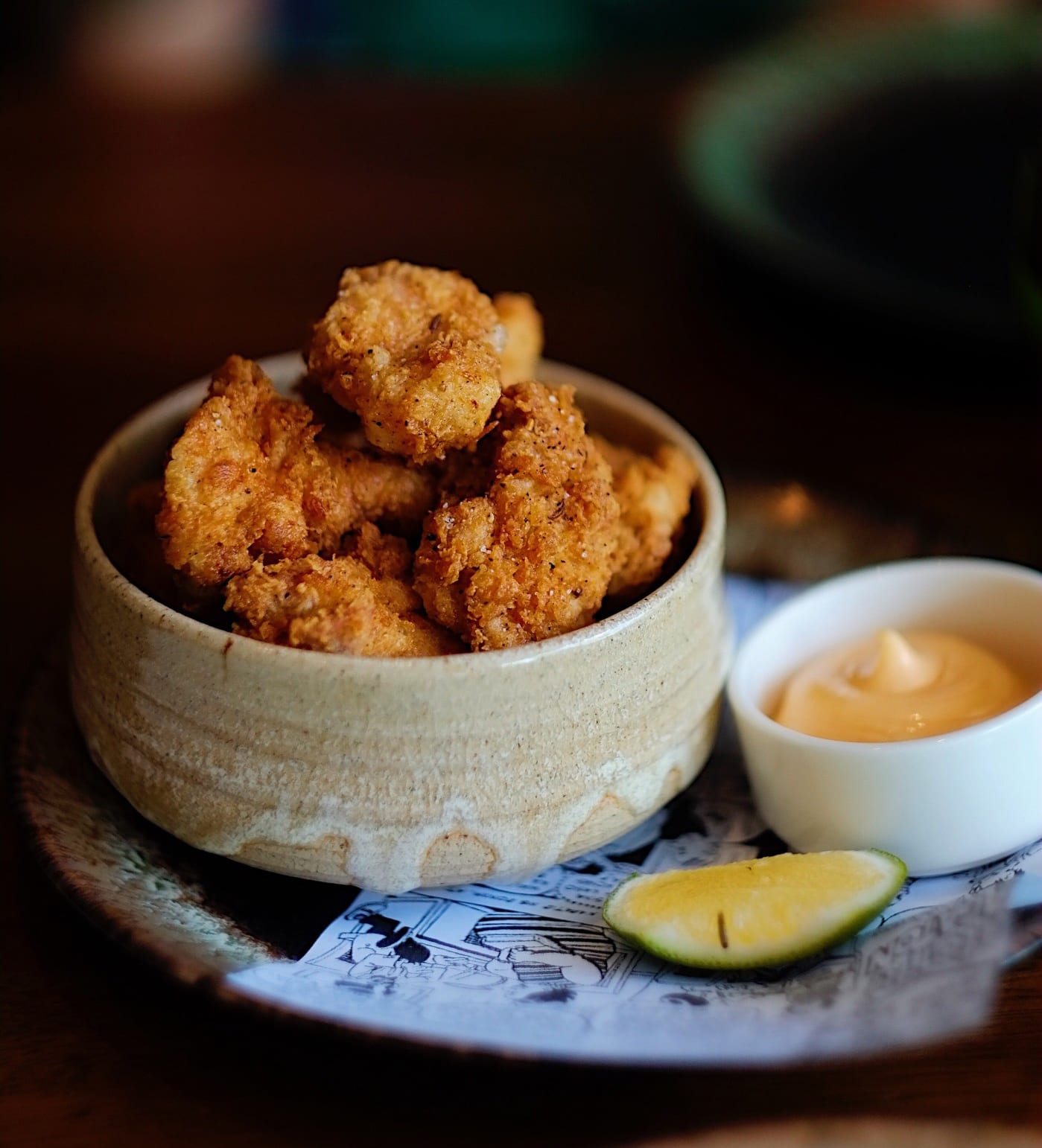
Before stumbling across this series, I will admit that I never put much emphasis on 酸味 in my own cooking.
But after applying what I had learned in Nosrat's episode about the use of 酸味 in Mexican cuisine, it felt like I'd found the missing piece to unify all 味. This series of ours is a love letter to Salt, Fat, Acid, Heat, and this article in particular is dedicated to Acid.
カリカリ
"kari kari" – crunchy
唐揚げ(からあげ)
"kara-age" – fried chicken
唐:から:T'ang, China
揚げ:あげ:fried
酢(す)
"su" – vinegar
こってり
"kotteri" – thick; rich; heavy
豚骨ラーメン(とんこつらーめん)
"tonkotsu ramen" – pork bone broth ramen
豚:とん:pork; pig
骨:こつ:bone; skeleton
I once had the good fortune of receiving an insider's tour of 築地(つきじ) and 豊洲(とよす) – the two major 海鮮(かいせん) hubs of 東京(とうきょう). Having close connections with a 通訳者(つうやくしゃ)who gave tours of the 市場(いちば )and the outer markets, I was invited to join one day as part of a branding project I was working on. As per the standard itinerary of this tour, the 通訳者 would lead me through 豊洲 to buy 魚(さかな) from the 仲卸業者(なかおろしぎょうしゃ), a particularly gruff bunch of fellows who didn't take kindly to outsiders and tourists. I followed my seasoned guide as she navigated through the damp, bustling trade center that supplies 海鮮 to all of the finest restaurants in the region.
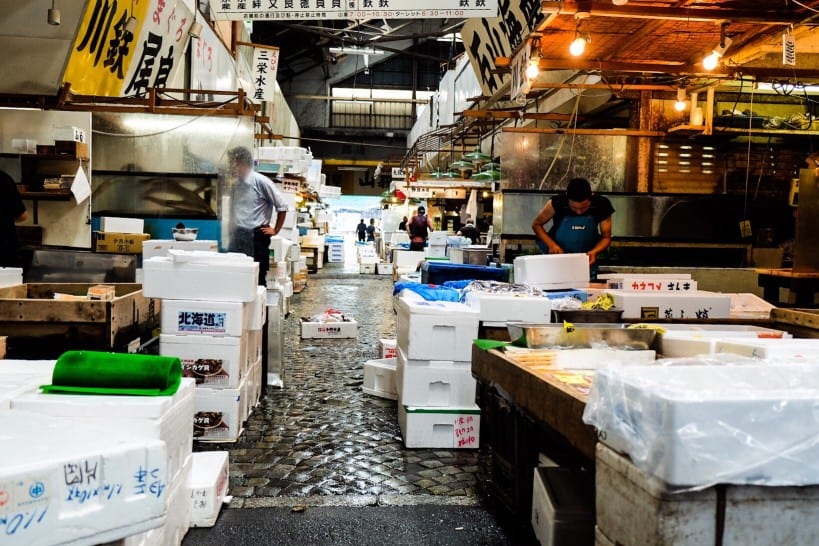
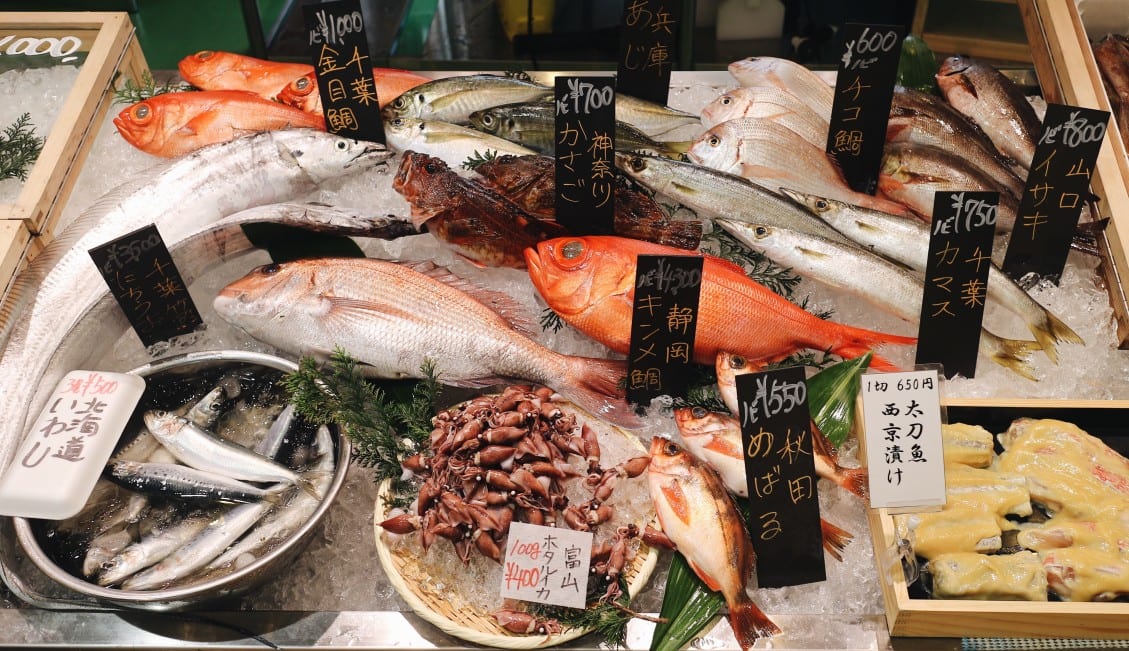
With a haul of fresh 海鮮, we hopped on the local train to 築地. We wove through the outer market and eventually arrived at an unassuming studio space equipped with a small 台所(だいどころ). Inside, a stocky, middle-aged chef with straggly grey hair was busy at work preparing a spread that seemed suitable for a small army. He was a fixture of my guide's operation, and had studied 料理 all over the world, from Italy to Central America. (Legend has it that he even enjoyed a stint as a luchador wrestler in Mexico City). I had heard great things about his skills of expert 味付け but had yet to taste them myself.
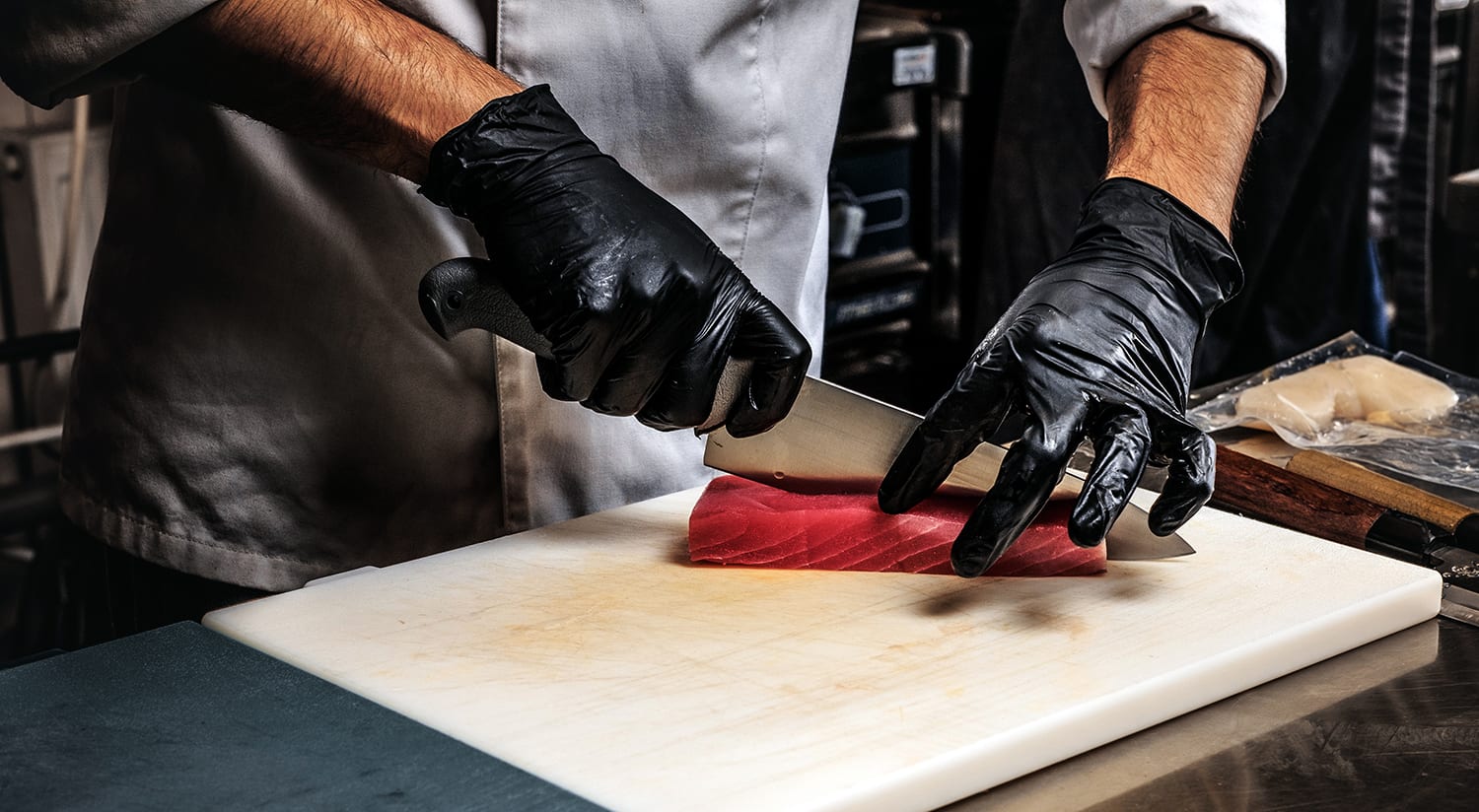
築地(つきじ)
"Tsukiji" – site of Tokyo's former wholesale fish market
築:つき:fabricate; build
地:じ:ground; earth
*literally translates to "reclaimed land"
豊洲(とよす)
"Toyosu" – site of Tokyo's current wholesale fish market
豊:とよ:bountiful; abundant
洲:す:continent; sandbar; country
海鮮(かいせん)
"kaisen" – seafood
海:かい:ocean; sea
鮮:せん:fresh; vivid; clear; brilliant
東京(とうきょう)
"Tōkyō" – Yes, the Tōkyō: Japan's capital
東:とう:east
京:きょう:capital
通訳者(つうやくしゃ)
"tsūyaku-sha" – interpreter
通:つう:pass through; lead to; avenue
訳:やく:translate; reason
者:しゃ:person
市場(いちば )
"ichiba" – marketplace
市:いち:market; city; town
場:ば:location; place
魚(さかな)
"sakana" – fish
仲卸業者(なかおろしぎょうしゃ)
"naka-oroshi gyō-sha" – wholesalers of seafood, particularly tuna
仲:なか:relationship; go-between
卸:おろし:wholesale
業:ぎょう:business; vocation
者:しゃ:person
台所(だいどころ)
"dai-dokoro" – kitchen
台:だい:pedestal; a stand; counter for machines
所:どころ:place
Placing our haul on the 板(いた) in from of him, we watched as he gracefully carved through the fleshy blocks like butter using a 柳刃包丁(やなぎばほうちょう). He then placed each piece methodically onto a large platter, on top of bright green 青じそ(あお紫蘇) leaves. It was a 寿司(すし)lover's dream, and an experience that foodies from all over the world might dream of having one day.
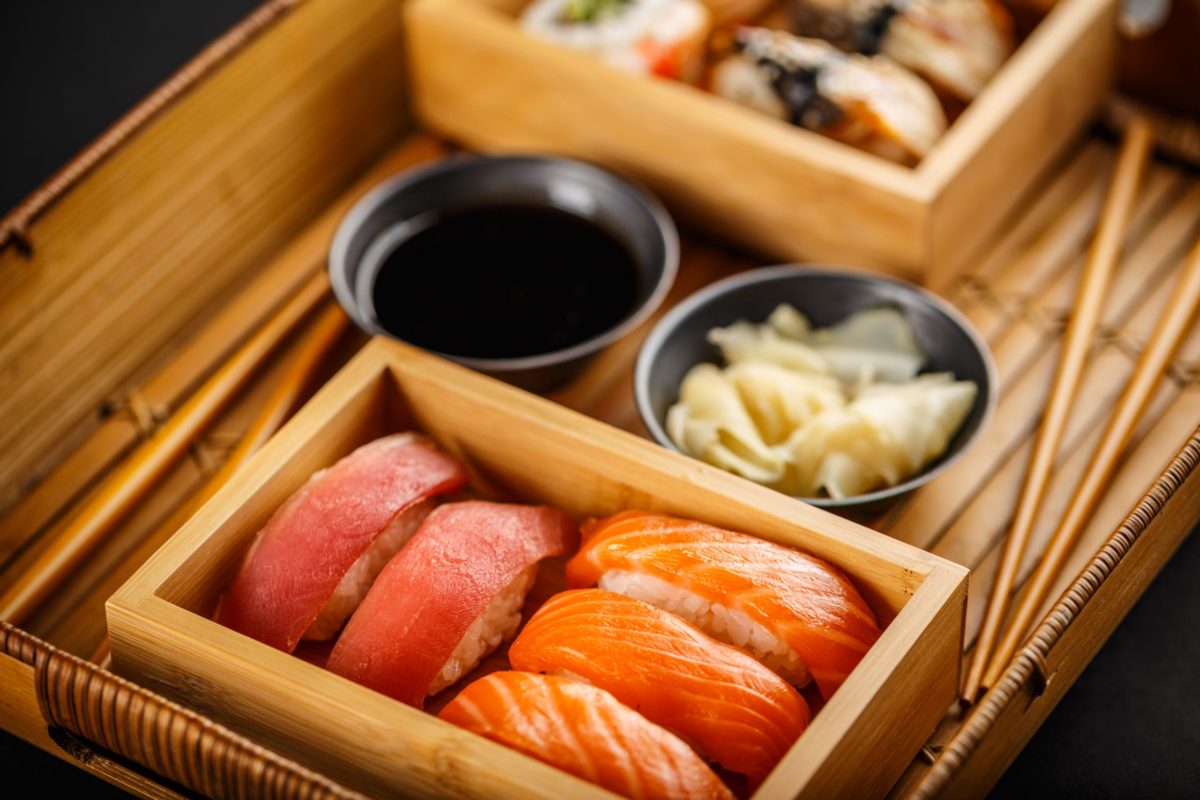
But... it's time for a confession. A 寿司 lover I was not.
It's my dirty little secret (one of them anyway) as a foreigner living in the 寿司 and 刺身(さしみ) capital of the world. I don't hate it – it's fine. But I could take it or leave it. I mean, when it's fresh and I'm hungry, then it's a great source of 蛋白質(たんぱくしつ). But that about sums up my thoughts on the matter. To me, there are so many more flavorful foods in the 和食 pantheon. I prefer more vibrant dishes that use fresh herbs, deep, rich sauces, and offer a variety of 舌触り(したざわり).
板(いた)
"ita" – board
柳刃包丁(やなぎばほうちょう)
"yanagi-ba hōchō" – special knife for cutting boneless sushi and sashimi
柳:やなぎ:willow
刃:ば:blade
"hōchō" – knife
包:ほう:wrap; conceal
丁:ちょう:tools; street; ward
青じそ(あお紫蘇)
"aojiso" – perilla leaves
青:あお:blue
紫:じ:purple
蘇:そ:revivded
*green and tasty – neither blue, nor purple, and certainly not revived
寿司(すし)
"sushi" – anything made with vinegared rice
寿:す:longevity
司:し:director
刺身(さしみ)
"sashimi" – raw fish
刺:さ・し:pierce; stab
身:み:body
蛋白質(たんぱくしつ)
"tanpaku-shitsu" – protein
蛋:たん:egg white
白:ぱく:white
質:しつ:substance; quality
舌触り(したざわり)
"shita-zawari" – mouth feel; texture of a food
舌:した:tongue
触り:ざわり:to touch
But as I sat down to the spread in front of me, I began to salivate. I took a helping of steamy ご飯(ごはん) off of the top of a large platter, and noticed something seductively 酸っぱい(すっぱい) in the aroma of the steam wafting off it. Next, I grabbed a few pieces of さけ(鮭), a couple slices of さば(鯖), and three considerable slabs of bright red まぐろ(鮪), along with handful of 青じそ leaves to add a fresh, herbal aromatic to my palate.
As I was about to dig in, Chef Luchador brought out a second platter. Lightly battered ぶり(鰤) alongside crispy fried ピーマン and なす slices and さつま芋(さつまいも) sat on a plate – to my surprise, expertly prepared 天ぷら(てんぷら)! Alongside this, he placed a platter of 柑橘(かんきつ) of different varieties, and a bottle on ポン酢(ぽんず). Bright, succulent wedges of lemon, すだち, and ゆず(柚子) adorned the plate, and at this point I was nearly drooling on myself. This man wasn't messing around! This wasn't the usual fare you'd usually get at your garden variety 寿司屋(すしや), and I for one, was now fully invested in this meal.
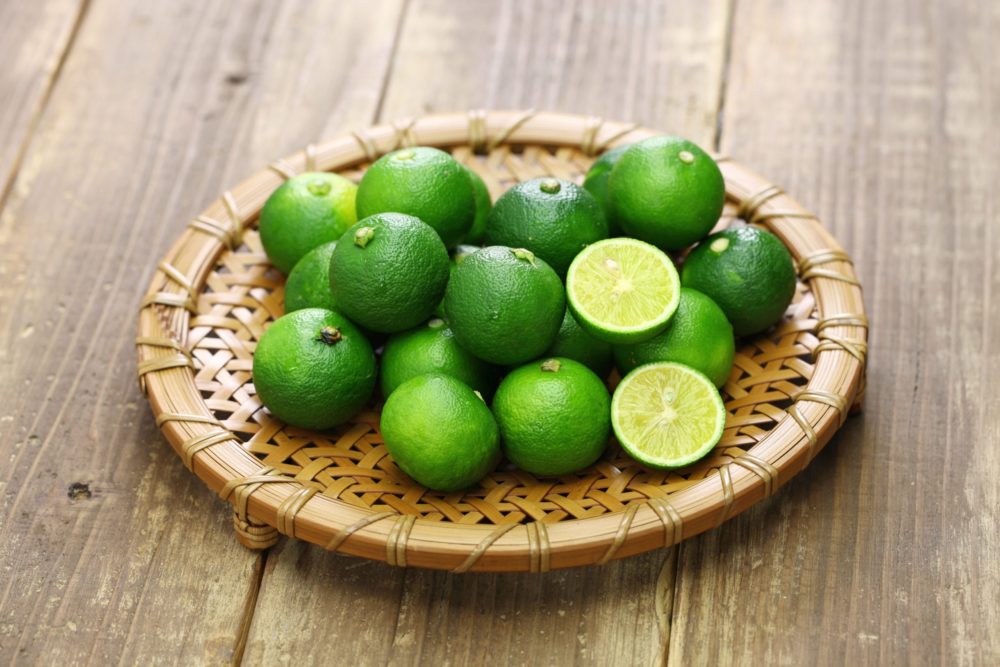
ご飯(ごはん)
"gohan" – rice; meal
ご:御:honorific marker denoting something deserving of respect
飯:はん:meal; boiled rice
酸っぱい(すっぱい)
"suppai" – sour
さけ(鮭)
"sake" – salmon
*often pronounced with a soft "sh" sound
さば(鯖)
"saba" – makerel
まぐろ(鮪)
"maguro" – tuna
ぶり(鰤)
"buri" – Japanese amberjack (species of yellowtail)
ピーマン
"pīman" – green pepper
さつま芋(さつまいも)
"satsuma-imo" – Japanese sweet potato
芋:いも:potato
天ぷら(てんぷら)
"tenpura" – batter fried foods
天:てん:heavens; sky; imperial
柑橘(かんきつ)
"kankitsu" – citrus
柑:かん:citrus; orange
橘:きつ:mandarin orange
ポン酢(ぽんず)
"ponzu" – a citrus-based Japanese sauce similar to soy sauce
すだち
"sudachi" – a species of Japanese citrus, green in color
ゆず(柚子)
"yuzu" – a species of Japanese citrus, yellow in color
ゆ:柚:citron
ず:子:child
寿司屋(すしや)
"sushi-ya" – a sushi restaurant
I greedily snatched a few pieces of 天ぷら, filled a 小皿(こざら)with ポン酢, squeezed a generous torrent of すだち juice onto the まぐろ, and some ゆず over the 天ぷら and dove in. First, a bite of warm, crunchy, ゆず drenched ぶり天. My taste receptors erupted as the flavors flowed together, the acidic 柑橘 cutting through the delicate crust enveloping the ぶり天.
Next, I clumsily shuffled a steamy clump of ご飯 topped with fresh まぐろ, fish-side-down (as instructed) into the ポン酢, and then in an act of dogged precision and willpower, into my face. A flavor bomb of tangy, acidic juices melted into each other all over my tongue. Even the ご飯 was teeming with a tart layer of 酢 which transformed it into 酢飯(すめし)my guide informed me.
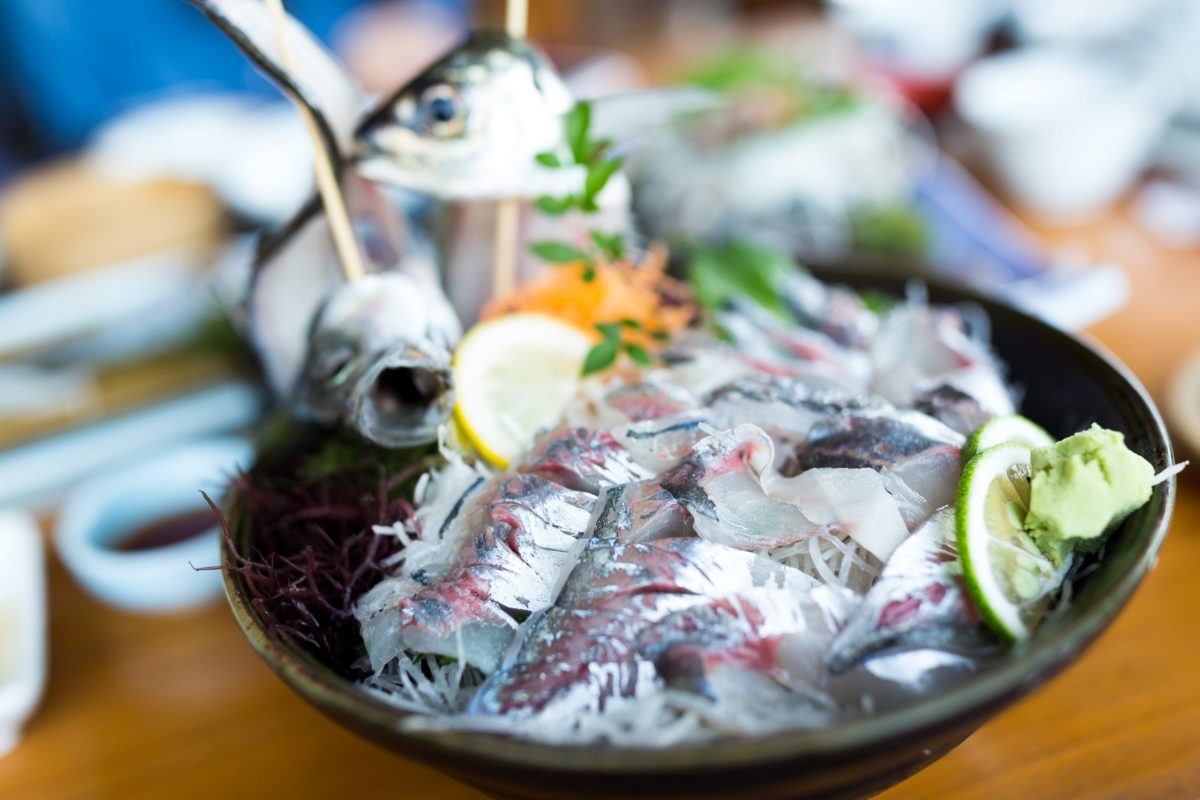
I was floored. This was the way to eat 海鮮! No wonder I was always less than enthusiastic about the boring plates of raw fish that so many weekend warriors and two-bit tourists clamoured on about – there was very little 酸味 punch to any of these meals. without this acidic flavor profile to cut through the 塩味 and the 甘味, food is mild at best, and bland at worst. In a word, つまらない. Chef Luchador had shown me a whole new 世界(せかい), and taken me on a magic carpet ride of 味.
小皿(こざら)
"kozara" – small plate for dipping sauce
小:こ:small
皿:ざら:plate
酢飯(すめし)
酢:す:vinegar
飯:めし:meal; boiled rice
つまらない(詰まらない)
"tsumaranai" – boring
詰・る:つま・る:to be packed; to be full
*yep, the kanji is one of those weird ones us non-natives don't understand
世界(せかい)
"sekai" – the world; society; the universe
世:せ:society; world
世:かい:world
While by no means completely absent from it, 酸味 isn't particularly pronounced in most 和食, and is more often tucked away in the subtler 調味料(ちょうみりょう)used in a dish. In large part, 和食 tends to be milder compared to other cuisines, and one reason for this is its sparing use of 酸味. Unlike its wily cousin Korean cuisine, which unabashedly uses an abundance of fermented foods and red hot pepper pastes, Japanese 酸味 prefers to be much subtler. But if you're observant, you'll start to spot it in almost all of the たれ(垂れ), だし(出汁), and おつまみ(お摘み)that unify the various 味 throughout 和食.
You might catch hints of 酸味 in the jar of 紅生姜(べにしょうが)hiding among the other self-serve 調味料 at a ラーメン屋(らーめんや), or the ポン酢 used for dipping in しゃぶしゃぶ. Maybe you've felt the overt smack in the face of an 梅干し(うめぼし)that your Japanese drinking buddy dared you to eat. The crisp 漬け物(つけもの)on the side of a 定食(ていしょく), and the 酢 boiled into 酢飯 each have their own distinct 酸味.
調味料(ちょうみりょう)
"chō-mi-ryō" – condiments
調:ちょう:tune; tone; arrange
味:み:flavor; taste
料:りょう:materials; fee
たれ(垂れ)
"tare" – sauce (particularly a mirin or soy-based sauce)
垂れ・る:たれ・る:to droop; to drip down; to hang down
だし(出汁)
"dashi" – a Japanese broth made from fish and kelp
だ:出:to come out of
し:汁:soup; juice
おつまみ(お摘み)
"otsumami" – snack; side dish (eaten while drinking alcohol)
摘・む:つま・む: to pick; to pluck
紅しょうが(べに生姜)
"beni shōga" – pickled red ginger
紅:べに:crimson; deep red
しょう:生:raw; life
が:姜:ginger
ラーメン屋(らーめんや)
"ramen-ya" – a ramen restaurant
屋:や:shop; store; dealer
しゃぶしゃぶ
"shabu shabu" – thinly sliced meat boiled with vegetables and dipping sauce
梅干し(うめぼし)
"umeboshi" – pickled plum
干し:うめ:plum
干し:ぼし:dry; parch
漬け物(つけもの)
"tsukemono" – pickled foods
漬:つけ:pickling; soak
物:もの:thing; object
定食(ていしょく)
"teishoku" – set meal
定:てい:determined; decided
食:しょく:meal; eat
While these are fine uses of 酸味, they barely scratch the surface of 酸味's potential to transform the flavors of 和食. This may be a matter of personal preference, but we encourage home cooks to experiment with 酸味 in their home made 和食, even if it means stepping outside of 伝統(でんとう).
A generous spoonful of ポン酢 in simple みそ汁(みそしる)incorporated with 無塩バター(むえんばたー)and some chopped ニンニク(にんにく、蒜)will bring the underwhelming stock to life. A splash of 巣立ち or lime over a 海鮮丼(かいせんどん)can electrify the flavors of 魚 in ways that 醤油(しょうゆ)alone cannot. Add an extra spoonful of 酒(さけ)to a marinade for 炒め(いため)for a sweet, acidic punch that locks the other flavors in.
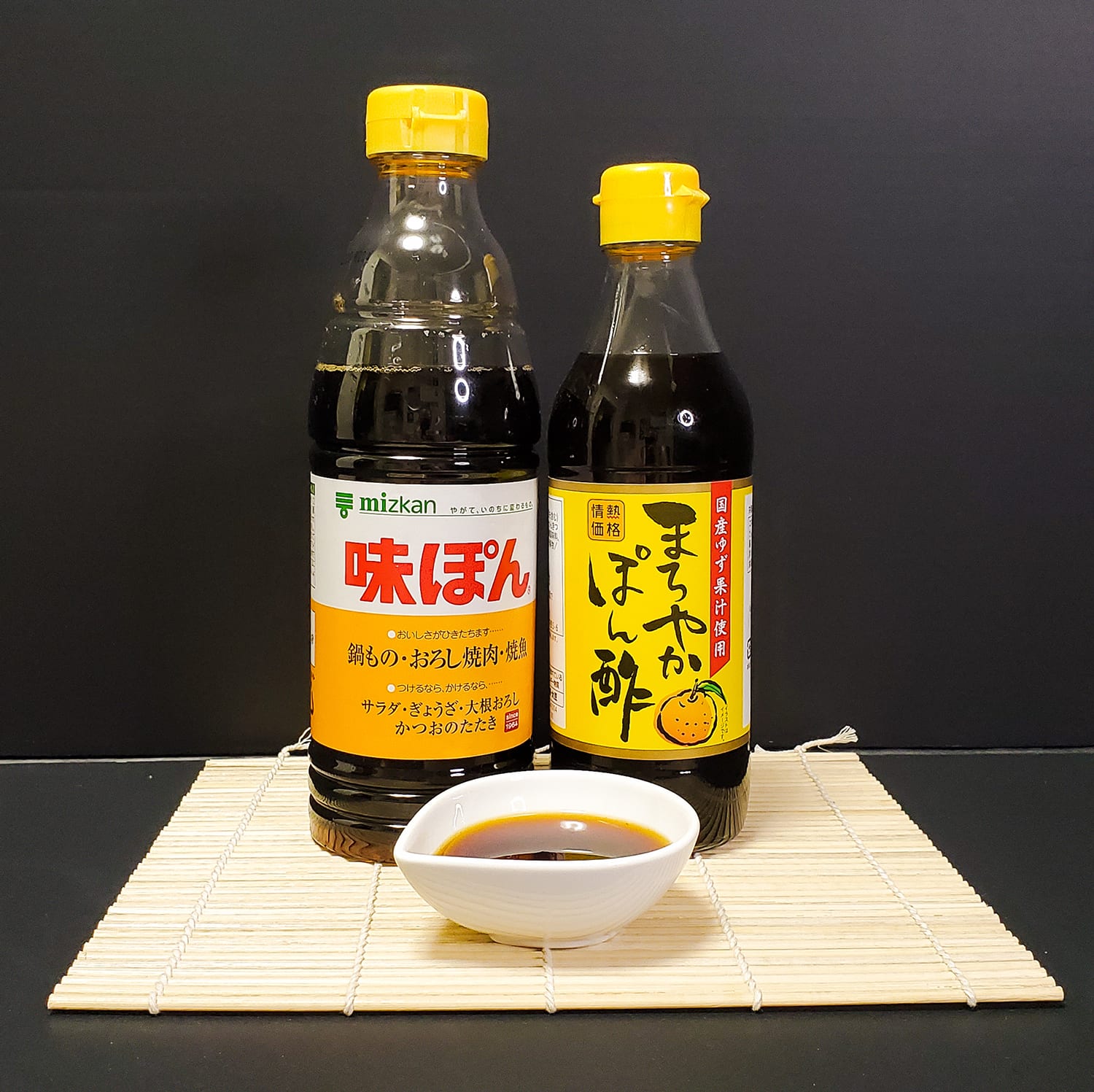
The fun thing about 酸味 is that it's hidden in places you might not even expect. みそ for example, is a fermented food, and has acidic properties. As Nosrat explains, "Technically, any substance that registers below 7 on the pH scale is an acid" (Nosrat, 272). This means that 酸味 is tucked into a lot of 調味料, as well as most フルーツ(果物、くだもの), 酒, and 乳製品(にゅうせいひん). With a bit of experimentation, and some outside-the-bento-box thinking, you can add zest to your 和食 in a variety of different ways!
伝統(でんとう)
"dentō" – tradition
伝:でん:transmit; walk along; report
統:とう:overall; relationship
みそ汁(味噌しる)
"miso shiru" – miso soup
み:味:flavor; taste
そ:噌:robust
汁:しる:soup; juice
無塩バター(むえんばたー)
"mu-en batā" – unsalted butter
無:む:nothing; none; void
塩:えん:salt
ニンニク(にんにく、蒜)
"nin-niku" – garlic
海鮮丼(かいせんどん)
"kaisen don" – bowl of seafood over rice
海:かい:ocean; sea
鮮:せん:fresh; vivid; clear; brilliant
丼:どん:bowl
醤油(しょうゆ)
"shōyu" – soy sauce
醤:しょう:a kind of miso
油:ゆ:oil
酒(さけ)
"sake" – Japanese rice wine
炒め(いため)
"itame" – stir fry; saute (noun form)
フルーツ
"furūtsu" – fruit
*Alt. 果物(くだもの)
果:くだ:fruit; reward
物:もの:thing; object
乳製品(にゅうせいひん)
"nyū sei-hin" – dairy products
乳:にゅう:milk; breasts
製:せい:manufactured; made in...
品:ひん:goods
The Kanji for "acidic" is 酸, read in its 訓読み form as す and its 音読み form as さん. Here are its most common forms:
In true acidic fashion, 酸味 balances out the length of this article compared to the others in this series by maintaining only a literal meaning. No lengthy explanations or clever stories to put word variations into context. Just a simple, direct meaning: acidic.
The word meanings according to the conjugations follow the same rules as 味, 塩味 and 甘味, so if you need a refresher course, read over those feature flavors once more.
訓読み(くんよみ)
"kunyomi" – the native Japanese reading of a kanji
訓:くん:instruction; native Japanese reading
読・み:よ・み:reading
音読み(くんよみ)
"onyomi" – the Chinese-derived reading of a kanji
音:おん:sound
読・み:よ・み:reading
味(あじ)
"aji" – flavor; taste
塩味(えんみ)
"enmi" – salty
塩:えん:salt
味:み:flavor; taste
甘味(かんみ)
"kanmi" – sweet
甘:かん:sweet
味:み:flavor; taste
酸味(さんみ)
"sanmi" – sour
酸:さん:acid
味:み:flavor; taste
旨味(うまみ)
"umami" – savory
旨:うま:savory; skilled; great
味:み:flavor; taste
苦味(にがみ)
"nigami" – bitter
苦:にが:bitter
味:み:flavor; taste
香り(かおり)
"kaori" – aromatic; fragrance
舌触り(したざわり)
"shita-zawari" – mouth feel; texture of a food
舌:した:tongue
触り:ざわり:to touch
青じそ(あお紫蘇)
"aojiso" – perilla leaves
青:あお:blue
紫:じ:purple
蘇:そ:revivded
*green and tasty – neither blue, nor purple, and certainly not revived
料理(りょうり)
"ryōri" – cooking
料:りょう:materials; fee
理:り:logic; reason; arrangement
和食(わしょく)
"Washoku" – Japanese cuisine
和:わ:Japanese style; harmony
食:しょく:eat; food
味付け(あじつけ)
"aji-tsuke" – flavor development
味:あじ:flavor; taste
付け:つけ:to add; to join; to fix
調味料(ちょうみりょう)
"chō-mi-ryō" – condiments
調:ちょう:tune; tone; arrange
味:み:flavor; taste
料:りょう:materials; fee
量(りょう)
"ryō" – amount
濃・い(こ・い)
"koi" – strong; dark; potent
小皿(こざら)
"kozara" – small plate for dipping sauce
小:こ:small
皿:ざら:plate
焼き(やき)
"yaki" – grill (noun form)
焼・き:や・き
定食屋(ていしょくや)
定:てい:planned; determined
食:しょく:meal; food
屋:や:shop; seller; dealer
食材料(しょくざいりょう)
"shokuzai-ryō"– ingredients
食:しょく:food; eat
材:ざい:lumber
料:りょう:materials
炒め(いため)
"itame" – stir fry; saute (noun form)
台所(だいどころ)
"dai-dokoro" – kitchen
台:だい:pedestal; a stand; counter for machines
所:どころ:place
板(いた)
"ita" – board
柳刃包丁(やなぎばほうちょう)
"yanagi-ba hōchō" – special knife for cutting boneless sushi and sashimi
柳:やなぎ:willow
刃:ば:blade
"hōchō" – knife
包:ほう:wrap; conceal
丁:ちょう:tools; street; ward
ラーメン屋(らーめんや)
"ramen-ya" – a ramen restaurant
屋:や:shop; store; dealer
定食(ていしょく)
"teishoku" – set meal
定:てい:determined; decided
食:しょく:meal; eat
食べ物(たべもの)
"tabemono" – food
食べ:たべ:food; eat
物:もの:thing; object
野菜(やさい)
"yasai" – vegetable
野:や:plains; field; rustic
菜:さい:vegetables; greens
果物(くだもの)
"kudamono" – fruit
果:くだ:fruit; reward
物:もの:thing; object
きゅうり *kanji very obscure and almost never used
"kyūri" – cucumber
動物(どうぶつ)
"dōbutsu" – animals
動:どう:move; motion
物:ぶつ:thing; object
肉(にく)
"niku" – meat; flesh
牛肉(ぎゅうにく)
"gyū niku" – beef
牛:ぎゅう:beef; cow
肉:にく:meat; flesh
鶏もも(とりもも)
"torimomo" – chicken thigh
鶏:とり:chicken
もも:thigh
玉子(たまご)
"tamago" – egg(s)
玉:たま:ball
子:ご:child; seed
卵焼き(たまごやき)
"tamago-yaki" – Japanese rolled omelette
卵:たまご:egg(s) *same meaning as 玉子, represented by one kanji
焼・き:や・き:to grill; to roast
刺身(さしみ)
"sashimi" – raw fish
刺:さ・し:pierce; stab
身:み:body
海鮮(かいせん)
"kaisen" – seafood
海:かい:ocean; sea
鮮:せん:fresh; vivid; clear; brilliant
ご飯(ごはん)
"gohan" – rice; meal
ご:御:honorific marker denoting something deserving of respect
飯:はん:meal; boiled rice
豚肉のしょうが焼き(ぶたにくのしょうがやき)
"buta-niku no shōgayaki" – stir-fried pork in ginger
豚肉(ぶたにく)
"buta niku" – pork
豚:ぶた:pork; pig
肉:にく:meat; flesh
しょうが(生姜)
"shōga" – ginger
しょう:生:raw; life
が:姜:ginger
海鮮(かいせん)
"kaisen" – seafood
海:かい:ocean; sea
鮮:せん:fresh; vivid; clear; brilliant
海鮮丼(かいせんどん)
"kaisen don" – bowl of seafood over rice
海:かい:ocean; sea
鮮:せん:fresh; vivid; clear; brilliant
丼:どん:bowl
ニンニク(にんにく、蒜)
"nin-niku" – garlic
フルーツ
"furūtsu" – fruit
*Alt. 果物(くだもの)
果:くだ:fruit; reward
物:もの:thing; object
乳製品(にゅうせいひん)
"nyū sei-hin" – dairy products
乳:にゅう:milk; breasts
製:せい:manufactured; made in...
品:ひん:goods
カリカリ
"kari kari" – crunchy
唐揚げ(からあげ)
"kara-age" – fried chicken
唐:から:T'ang, China
揚げ:あげ:fried
こってり
"kotteri" – thick; rich; heavy
豚骨ラーメン(とんこつらーめん)
"tonkotsu ramen" – pork bone broth ramen
豚:とん:pork; pig
骨:こつ:bone; skeleton
魚(さかな)
"sakana" – fish
寿司(すし)
"sushi" – anything made with vinegared rice
寿:す:longevity
司:し:director
酢飯(すめし)
酢:す:vinegar
飯:めし:meal; boiled rice
たれ(垂れ)
"tare" – sauce (particularly a mirin or soy-based sauce)
垂れ・る:たれ・る:to droop; to drip down; to hang down
おつまみ(お摘み)
"otsumami" – snack; side dish (eaten while drinking alcohol)
摘・む:つま・む: to pick; to pluck
しゃぶしゃぶ
"shabu shabu" – thinly sliced meat boiled with vegetables and dipping sauce
みそ汁(味噌しる)
"miso shiru" – miso soup
み:味:flavor; taste
そ:噌:robust
汁:しる:soup; juice
さけ(鮭)
"sake" – salmon
*often pronounced with a soft "sh" sound
さば(鯖)
"saba" – mackerel
まぐろ(鮪)
"maguro" – tuna
ぶり(鰤)
"buri" – Japanese amberjack (species of yellowtail)
ピーマン
"pīman" – green pepper
さつま芋(さつまいも)
"satsuma-imo" – Japanese sweet potato
芋:いも:potato
天ぷら(てんぷら)
"tenpura" – batter fried foods
天:てん:heavens; sky; imperial
塩(しお)
"shio" – salt
塩っぱ・い:しょっぱ・い:salty (adjective)
塩っぱ・さ:しょっぱ・さ:saltiness (noun)
塩味:えん・み:subjective level of saltiness (noun)
塩分(えんぶん)
"enbun" – salt content; The amount of sodium in a food
塩:えん:salt
分:ぶん:portion
醤油(しょうゆ)
"shōyu" – soy sauce
醤:しょう:a kind of miso
油:ゆ:oil
みそ(味噌)*primarily written in kana
"miso" – fermented soybean paste
み:味:flavor; taste
そ:噌:robust
赤味噌(あかみそ)
"aka miso" – red miso paste
赤:あか:red
味:み:flavor; taste
噌:そ:robust
甘い:あま・い:sweet (adjective)
甘さ:あま・さ:sweetness (noun)
甘味:かん・み:subjective level of sweetness (noun)*
甘み:あま・み:same meaning as 甘味, used more in casual conversation
みりん(味醂)*primarily written in kana
"mirin" – Japanese cooking wine
み:味:flavor; taste
りん:醂:bleach in water
砂糖(さとう)
"satō" – sugar
砂:さ:sand
糖:とう:sugar
糖分(とうぶん)
糖:とう:sugar
分:ぶん:portion
酒(さけ)
"sake" – Japanese rice wine
砂糖(さとう)
"satō" – sugar
砂:さ:sand
糖:とう:sugar
優しい(やさしい)
"yasashii" – gentle; kind
優し・い:やさし・い
蜂蜜(はちみつ)
"hachimitsu" – honey
蜂:はち:bee; wasp; hornet
蜜:みつ:honey; nectar
黒糖(こくとう)
"kokutō" – unrefined brown sugar
黒:こく:black
糖:とう:sugar
酸っぱい:すっぱ・い:sour; acidic (adjective)
酸っぱさ:すっぱ・さ:sourness; acidity (noun)
酸味:さん・み:subjective level of sourness (noun)*
酸っぱみ:すっぱ・み:same meaning as 酸味, used more in casual conversation
腐ってる(くさってる)
"kusatteru" – rotting; rotten
腐る:くさる:to rot; to go bad; to decay; to spoil
酒(さけ)
"sake" – Japanese rice wine
酸っぱい(すっぱい)
"suppai" – sour
梅干し(うめぼし)
"umeboshi" – pickled plum
干し:うめ:plum
干し:ぼし:dry; parch
漬け物(つけもの)
"tsukemono" – pickled foods
漬:つけ:pickling; soak
物:もの:thing; object
紅しょうが(べに生姜)
"beni shōga" – pickled red ginger
紅:べに:crimson; deep red
しょう:生:raw; life
が:姜:ginger
酢(す)
"su" – vinegar
柑橘(かんきつ)
"kankitsu" – citrus
柑:かん:citrus; orange
橘:きつ:mandarin orange
ポン酢(ぽんず)
"ponzu" – a citrus-based Japanese sauce similar to soy sauce
すだち
"sudachi" – a species of Japanese citrus, green in color
ゆず(柚子)
"yuzu" – a species of Japanese citrus, yellow in color
ゆ:柚:citron
ず:子:child
旨味(うまみ)
"umami" – savory; savoriness
旨:うま:delicious; skilled
味:み:flavor; taste
だし(出汁)
"dashi" – a Japanese broth made from fish and kelp
だ:出:to come out of
し:汁:soup; juice
苦い(にがい)
"nigai" – bitter
注意(ちゅうい)
"chūi" – CAUTION
注:ちゅう:concentration; notes; to pour into
意:い:idea; mind; thought
危険(きけん)
"kiken" – danger; hazard
危:き:dangerous; fear
険:けん:steep place; sharp eyes; precipitous
毒性(どくせい)
"dokusei" – toxic; poisonous
毒:どく:poison; germ
性:せい:essential nature; gender
辛味(からみ)
"karami" – spiciness (subjective)
辛:から:spicy
味:み:flavor
バター(ばたー)
"batā" – ...butter
加塩バター(かえんばたー)
"ka-en batā" – salted butter
加:か:add; join; include
塩:えん:salt
無塩バター(むえんばたー)
"mu-en batā" – unsalted butter
無:む:nothing; none; void
塩:えん:salt
胡麻油(ごまあぶら)
"goma-abura" – sesame oil
胡:ご:foreign; barbarian
麻:ま:hem; flax
油:あぶら:oil
炭水化物(たんすいかぶつ)
"tansui-kabutsu" – carbohydrates
炭:たん:charcoal
水:すい:water
化:か:change; take the form of
物:ぶつ:thing; object
蛋白質(たんぱくしつ)
"tanpaku-shitsu" – protein
蛋:たん:egg white
白:ぱく:white
質:しつ:substance; quality
脂肪質(しぼうしつ)
"shibō-shitsu" – fat
脂:し:fat; grease; lard
肪:ぼう:obese; fat
質:しつ:substance; quality
塩分(えんぶん)
"enbun" – sodium content
塩:えん:salt
分:ぶん:portion
糖分(とうぶん)
糖:とう:sugar
分:ぶん:portion
電解質(でんかいしつ)
"denkaishitsu" – electrolytes
電:でん:electricity
解:かい:unravel; untie; solve
質:しつ:substance; quality; matter
訓読み(くんよみ)
"kunyomi" – the native Japanese reading of a kanji
訓:くん:instruction; native Japanese reading
読・み:よ・み:reading
音読み(くんよみ)
"onyomi" – the Chinese-derived reading of a kanji
音:おん:sound
読・み:よ・み:reading
国(くに)
"kuni" – country
王(おう)
"ō" – king
総理大臣(そうりだいじん)
"sōridaijin" – prime minister
総:そう:whole; all; general
理:り:logic; reason; arrangement
大:だい:big; large
臣:じん:retainer; minister; subject
築地(つきじ)
"Tsukiji" – site of Tokyo's former wholesale fish market
築:つき:fabricate; build
地:じ:ground; earth
*literally translates to "reclaimed land"
豊洲(とよす)
"Toyosu" – site of Tokyo's current wholesale fish market
豊:とよ:bountiful; abundant
洲:す:continent; sandbar; country
東京(とうきょう)
"Tōkyō" – Yes, the Tōkyō: Japan's capital
東:とう:east
京:きょう:capital
通訳者(つうやくしゃ)
"tsūyaku-sha" – interpreter
通:つう:pass through; lead to; avenue
訳:やく:translate; reason
者:しゃ:person
市場(いちば )
"ichiba" – marketplace
市:いち:market; city; town
場:ば:location; place
仲卸業者(なかおろしぎょうしゃ)
"naka-oroshi gyō-sha" – wholesalers of seafood, particularly tuna
仲:なか:relationship; go-between
卸:おろし:wholesale
業:ぎょう:business; vocation
者:しゃ:person
つまらない(詰まらない)
"tsumaranai" – boring
詰・る:つま・る:to be packed; to be full
*yep, the kanji is one of those weird ones us non-natives don't understand
世界(せかい)
"sekai" – the world; society; the universe
世:せ:society; world
世:かい:world
伝統(でんとう)
"dentō" – tradition
伝:でん:transmit; walk along; report
統:とう:overall; relationship
Did you like this article? Please share it around!
Tags
food
Never miss a post – let us slide into your inbox with hot articles.
Session expired
Please log in again. The login page will open in a new tab. After logging in you can close it and return to this page.